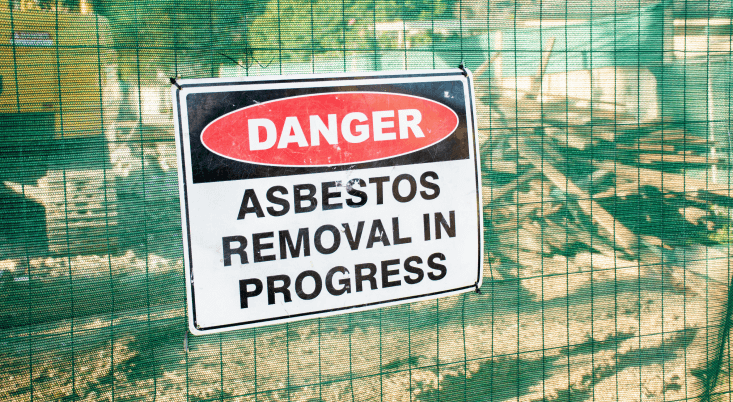
On March 18, 2024, the Environmental Protection Agency (EPA) announced the agency would be banning the use of chrysotile asbestos.
An asbestos ban was first passed in 1989, but it was overturned in 1991. Since then the government has failed to protect the public from asbestos and its resulting health issues like mesothelioma. As a result, 40,000 people die from asbestos-related diseases every year.
One of the few options for justice victims have had is through mesothelioma lawsuits filed long after the damage was already done.
The EPA’s asbestos regulation is a historic move to protect workers in industries that continue to use asbestos, but many advocates wonder if the ban covers enough.
“The EPA is so proud to finalize this long-needed ban on ongoing uses of asbestos,” said EPA Administrator Michael S. Regan. “This action is just the beginning as we work to protect all American families, workers, and communities from toxic chemicals.”
Learn more about why the EPA is finalizing an asbestos ban and how it could help protect future generations from mesothelioma.
Understanding the EPA’s Ban on Chrysotile Asbestos
In April 2022, the EPA first proposed the rule to ban and phase out the use of chrysotile asbestos, one of six different types of the mineral. This type of asbestos is still imported to the U.S. today and is primarily used in the chemical manufacturing, oil extraction, and nuclear waste management industries.
The rule was drafted after the EPA performed a risk evaluation of the material in 2020 as a result of the 2016 amendments to the Toxic Substances Control Act, which gave the EPA more authority to assess and regulate various chemicals.
The assessment found that chrysotile asbestos had “unreasonable risks” to the health of workers and the general public exposed to asbestos.
To protect the public from these risks, the EPA asbestos ban will:
- Stop imports of chrysotile asbestos for the chlorine manufacturing (chlor-alkali) industry immediately
- Require all chemical manufacturing facilities using asbestos to phase out use within 5-12 years
- Ban asbestos-containing sheet gaskets, oilfield brake blocks, automotive brakes and linings, and other vehicle friction products between 6 months and 2 years
- Enact strict workplace safety measures to keep employees safe during phase-out periods longer than 2 years
“With today’s ban, EPA is finally slamming the door on a chemical so dangerous that has been banned in over 50 countries,” Regan said.
Industry Response to the Asbestos Ban and Phase-Out Rule
For the past two years, the EPA’s proposed rule has been under review by industries that still use dangerous asbestos products and claim the timeline is too aggressive.
The main industry still using chrysotile asbestos is the chlor-alkali industry. This mineral is used in diaphragms that filter and prevent chemicals from combusting during manufacturing.
While some chemical companies like Chemours claimed to need at least 5 years to transition to alternatives, others like the American Chemical Council argued for an extended timeline of 15-25 years to completely phase out asbestos.
In a meeting with White House staff, industry leaders justified this long timeline by claiming the EPA’s rule may impact the availability of chlorine for water treatment and limit access to clean, drinkable water.
One notable exception in this industry is Olin Corporation, which has shown support for the EPA’s rule. In April 2023, Olin Corp. revised its stance that there were no alternatives to asbestos, while committing to replacing asbestos within 2 years and removing all existing asbestos products within 5 years.
Despite Olin agreeing to a faster timeline, the EPA conceded to the lengthier timelines suggested by other chemical giants, with some facilities having up to 12 years or longer to convert to asbestos alternatives.
However, advocates are urging Congress and other policymakers to push for more expansive and immediate regulations.
Advocates Call for Stronger EPA Asbestos Regulations
While the EPA’s rule is an important step in keeping people safe from asbestos, advocates from the Asbestos Disease Awareness Organization (ADAO) and other organizations have said the rule is too limited compared to the widespread dangers of asbestos.
ADAO Co-founder and President Linda Reinstein has been on the frontlines of this fight for decades and is happy to see progress being made — but she continues to press for further regulations.
“While closing the door to chrysotile imports is a historic step, the EPA rule does not restrict importation and use of five other recognized asbestos fibers,” said Linda. “We are also alarmed that the rule allows an unnecessarily long transition period and creates inconsistent compliance deadlines for certain asbestos users that will enable dangerous exposure to chrysotile asbestos to continue for years to come.”
The organization believes that lengthy phaseout schedules are unnecessary and wrongfully endanger people to years of additional asbestos exposure and devastating illnesses.
For this reason, the ADAO is continuing to call for Congress to pass the Alan Reinstein Ban Asbestos Now (ARBAN) Act to end all uses of asbestos.
“Without legislation, current and future exposure to asbestos fibers that have the same lethal properties as chrysotile can continue,” said ADAO Counsel Bob Sussman. “Congress can put a stop to this exposure by banning all six asbestos fibers now.”
Simmons Hanly Conroy: Supporting Victims of Asbestos Exposure Nationwide
As a leading national mesothelioma law firm, Simmons Hanly Conroy has witnessed firsthand the devastating impact of mesothelioma on families across the country.
Our attorneys have fought for justice on behalf of thousands of victims, both in court and through advocacy efforts pushing for an asbestos-free future.
Since 1999, our mesothelioma lawyers have helped secure over $9.3 billion in mesothelioma settlements and verdicts for thousands of families across the country.
Call (800) 326-8900 now for a free legal consultation to find out if we may be able to help your family.




